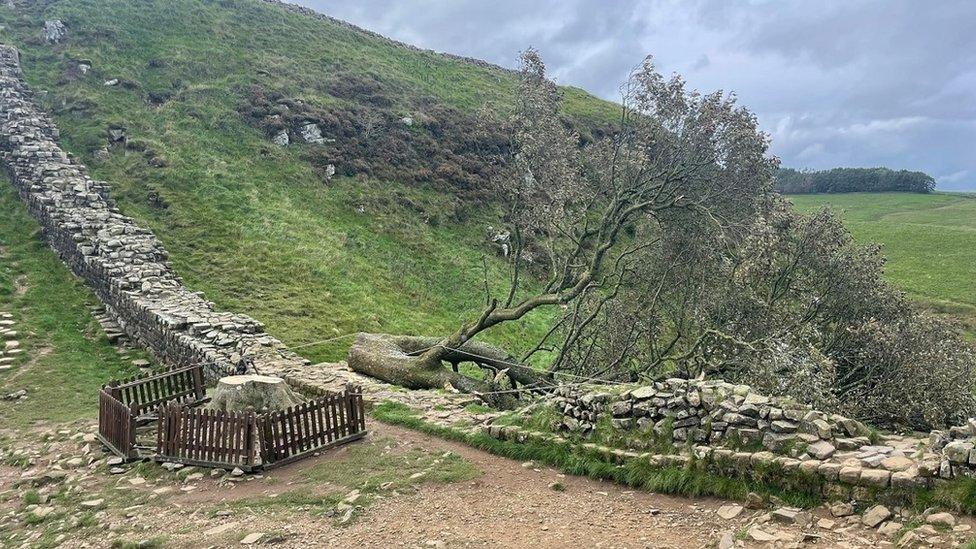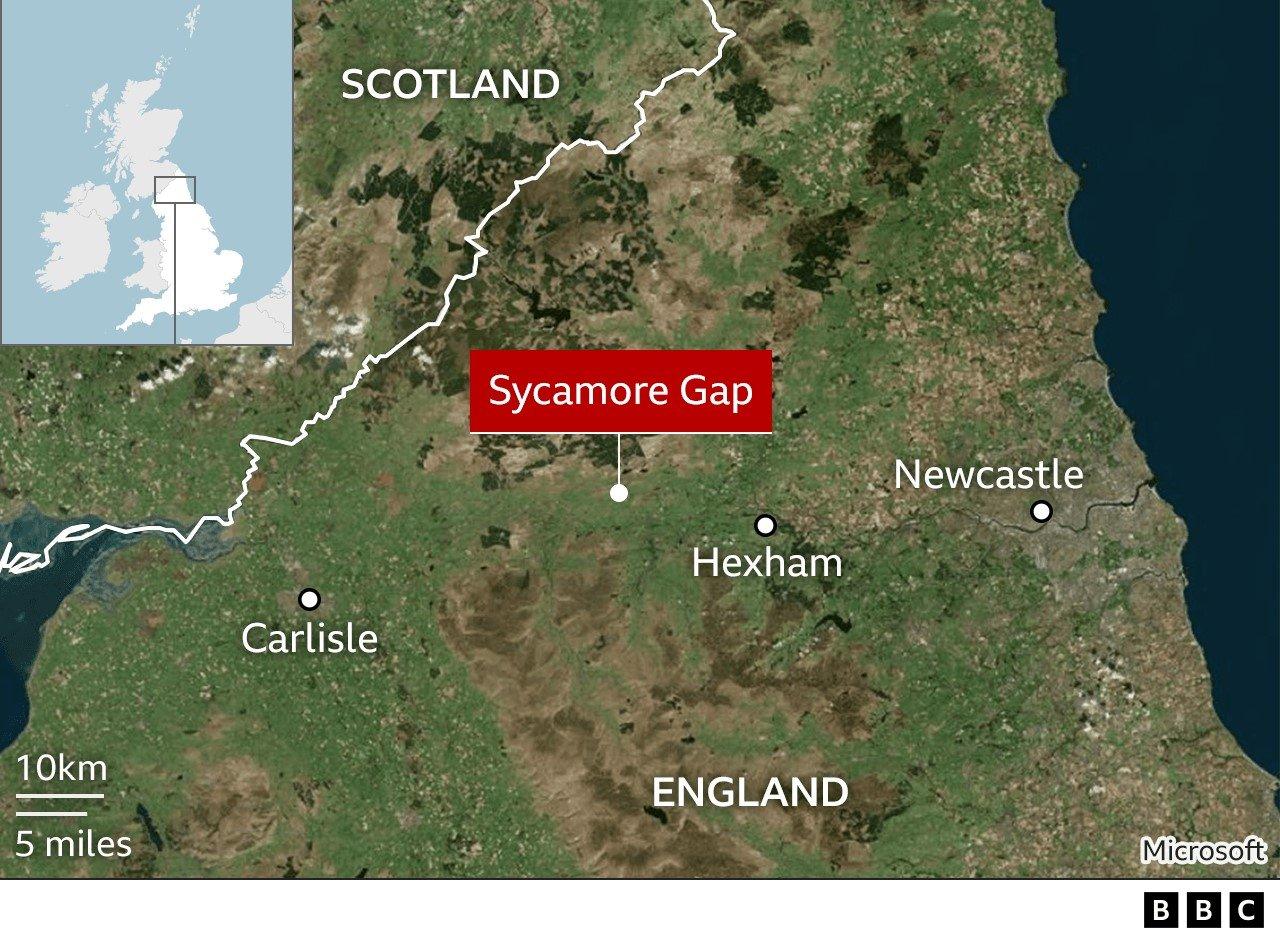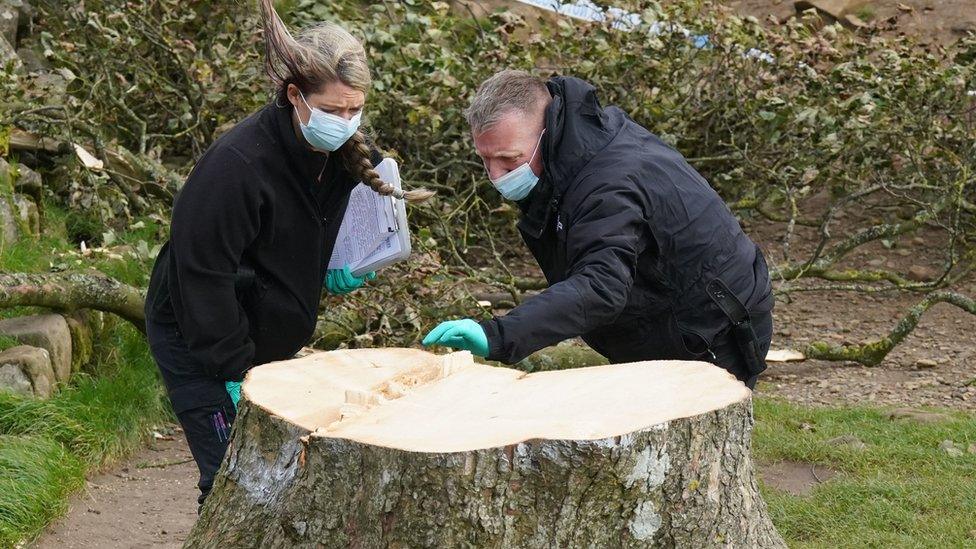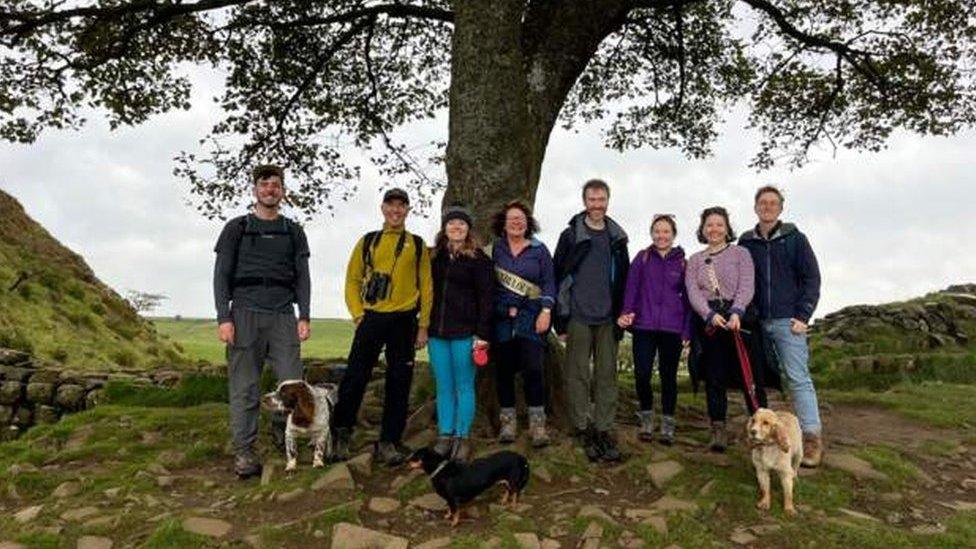Sycamore Gap: Man in his 60s bailed over tree felling
- Published

Authorities have built a wooden fence to prevent people touching the tree's stump
A man in his 60s who was arrested over the cutting-down of the world-famous Sycamore Gap tree has been bailed.
The landmark, which was believed to be about 300 years old and stood beside Hadrian's Wall in Northumberland, was cut down overnight on Wednesday.
Northumbria Police said the man was arrested on suspicion of criminal damage on Friday and was released on bail pending further inquiries.
The force said the investigation remains ongoing.
A boy, 16, who was also arrested on suspicion of criminal damage on Thursday was later released on bail.

The National Trust has asked people not to take away branches or other pieces of the tree
A police presence remained at the site on Friday and across the weekend, with forensics officers taking measurements and samples from the remains and photographing the area.
The tree grew in a natural dip in the landscape near Hexham and featured in the 1991 film Robin Hood: Prince of Thieves, starring Kevin Costner.
It was looked after by both the Northumberland Park Authority and the National Trust.

On Sunday, Robin Hood actor Brian Blessed urged park bosses to plant another tree near the felled Sycamore Gap landmark.
National Trust manager Andrew Poad previously said the stump was "healthy" and they might be able to coppice the tree, where new shoots grow from the trunk's base, external.
Meanwhile Mark Feather, estate manager at the Woodland Trust, said it would "take a few years to develop into even a small tree and around 150 to 200 years before it is anywhere close to what we have lost".
"Once a tree of this age has gone, the sad truth is you can't replace them within any visible timeframe. It takes centuries," he said.
Watch: The Sycamore Gap... then, and now
Over the past week, people have shared their memories and paid tributes to the landmark, including one man who planted a sapling near the felled tree.
National Trust officials said they had to remove the sapling because of the site's Unesco World Heritage status.
The National Trust said it was "grateful for the many offers of support" but added it was "important for everyone to remember" the site is an ancient monument and "adding to it can damage the archaeology" and is "unlawful without prior consent from the government".

Follow BBC North East & Cumbria on X (formerly Twitter), external, Facebook, external and Instagram, external. Send your story ideas to northeastandcumbria@bbc.co.uk, external.
- Published29 September 2023

- Published29 September 2023

- Published28 September 2023
